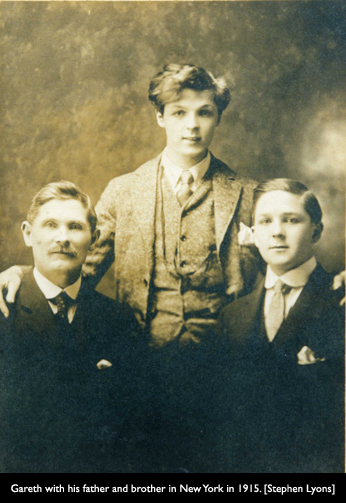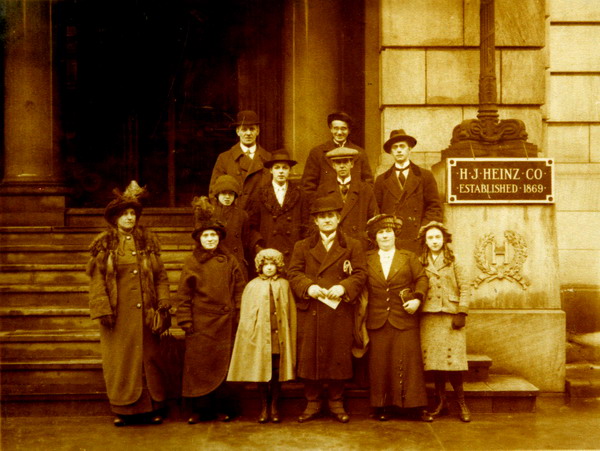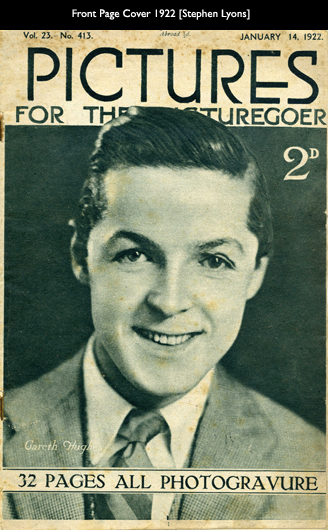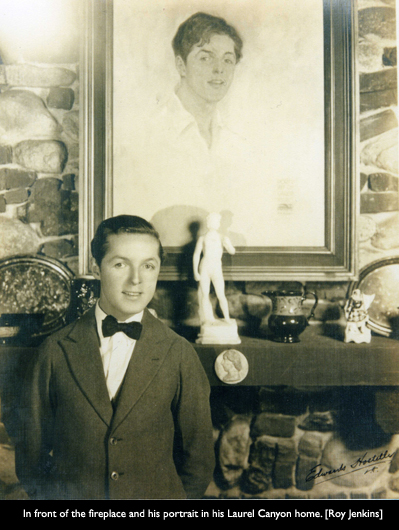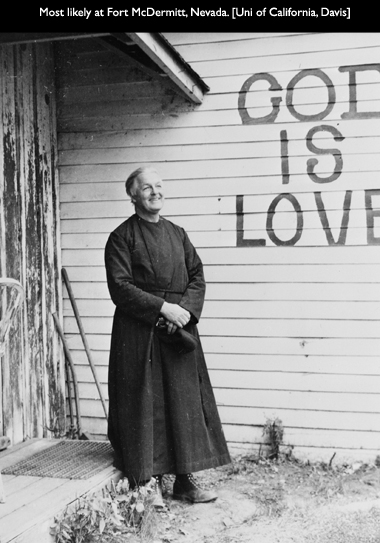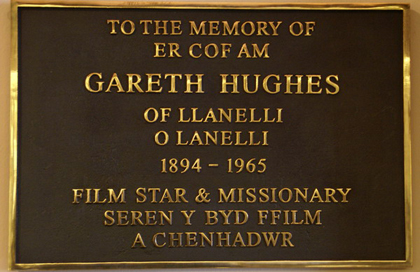
William John Hughes was born on 23rd August 1894 at Halfway, Dafen, Llanelli, Carmarthenshire (he adopted the stage name Gareth Hughes later), the elder son of John Elias Hughes, a tinplate boxer, and Ann Hughes (née Morgan). His father, an accomplished orator, was the winner of many a silver cup and purse at local Eisteddfodau.
Although apprenticed to a Chemist in Vaughan Street, he left home in 1911 to pursue an acting career in London. He obtained work, now as Gareth Hughes, with Alan Wilkie’s Shakespearean touring company and F. B. Wolfe’s Repertoire Company performing melodrama in 1911. Further engagements in South Wales and then with Denis Hogan and Amanda Beresford’s Shakespearean company in 1912 preceded his inclusion in a company of Welsh Players. The Players toured a farce, Little Miss Llewellyn, during the first half of 1913. As part of a Welsh National Theatre movement in January 1914 he sailed to America with the Welsh Players to perform J. O. Francis’s prizewinning play Change. Gareth played the small part of Dai Matthews, a socialist agitator but, at the end of the tour in Chicago, took over the part of Gwilym Price, an invalid and one of the three sons in the play. Gareth’s performance as Gwilym won him high praise and, as a result, he remained in America at the end of the engagement.
Between May 1914 and August 1915 he worked variously with Guy Bates Post, Ben Greet’s Woodland Players, James O’Neill (father of writer Eugene O’Neill) and the Irish Theatre of America. In September 1915 in a short appearance in Moloch on Broadway he stole the best reviews of the season.
Starring roles in further theatre productions on Broadway, in Chicago and Los Angeles followed over the next three years. Gareth accepted his first starring film role in Chicago in late 1915 and went to Hollywood to play a leading role with Clara Kimball Young in Eyes of Youth in 1919.
In September 1920 he was contracted to Metro Films and billed as “Metro’s Boy Star”. However, before being able to commence work with Metro, author James Barrie selected Gareth to star as Tommy Sandys in the film of his book Sentimental Tommy and, loaned to Famous Players Lasky for this role, he returned to the East Coast to film at the new Paramount Astoria Studios on Long Island.
On his return to Hollywood in 1921 he purchased land for a home in Laurel Canyon and began work on the first of five films for Metro, directed by George Baker.
Gareth became a US Citizen in 1922 and worked almost exclusively in film until 1925. He returned home in October 1922 while filming Enemies of Women in Europe and again in the autumn of 1924. In July 1924 and February 1925 he appeared in Vaudeville and appeared in theatre once more in New York in The Dunce Boy in April and May 1925.
From 1925 until 1931 he continued to appear in films and the occasional theatre production. His career, however, was waning at this time. Gareth’s accent wasn’t a problem as movies transitioned from Silent to Talkies: his success on the stage was proof of this. It was more his physicality which hindered progress. He was only 5’ 7” tall and had the body of a pin. His youthful and ethereal like manner belied his advancing years and he simply lacked the “ruggedness” required of the leading man of the day. He was, quite clearly, not being offered the kind of role which would help him to survive into the next decade of film making. In 1929 his investments were wiped out in the Wall Street Stock Market crash and for a number of years in the 1930s Gareth found himself without funds and without work, moving from apartment to apartment in the Echo Park district of Los Angeles.
In January 1936 Gareth joied the Federal Theatre Project in Los Angeles, an initiative started by President Roosevelt’s Works Project Administration to support ailing professions. In the spring of 1937 Gareth played Shylock in The Merchant of Venice at the Hollywood Playhouse: a role he had played to great acclaim as a schoolboy in Llanelli.In November 1937 he was reassigned as Director of Religious and Shakespearean Drama for the project. Ill health and exhaustion forced his retirement from the Project in March 1939.
In 1941, experiencing an immense desire to serve God, Gareth was baptized and confirmed. He was determined to take Holy Orders and was admitted as a postulant to the Society of St. John the Evangelist at Cambridge, Massachusetts and took the title Brother David. However, deemed as unsuitable for Holy Orders he left the Society and took up his second attempt at the Order of the Holy Cross in New York in 1943. In 1944 he worked as dialect coach to Bette Davis and the cast of The Corn Is Green before accepting an offer to serve as a Lay Minister for the Order of the Holy Cross on the Pyramid Lake Indian Reservation at Nixon, Nevada.
Brother David served at Nixon, at nearby Wadsworth and at Fort McDermitt on the Nevada Oregon border until 1956. The methods he employed in his service were seen as controversial by many of his colleagues and his ability to cater to the needs of the Paiute people, whom he called “his children”, was regularly challenged. It was a difficult path, but his ability to reach the Paiutes in a way no other white man had to date was recognised by Bishop Lewis, Head of the Protestant Diocese of Nevada. He was greatly loved by the Paiutes he cared for. There was a massive increase in Church attendance at Nixon and Wadsworth while Brother David was in charge. He encouraged businesses and events to engage in activities which benefited the Tribe. He persuaded his old Hollywood friends to supply films to show in the Church Hall and to donate clothing to his Indians. He taught the Paiutes to polish stones to make jewellery to sell, providing the mountings and fixings himself and instituted a sewing club. He paid for shoes for the children from his own meagre salary. He persuaded Hotel owners in Reno to host groups of young Paiutes for lunch while they obtained a glimpse of city life. He would do anything in his power to enhance their lives and he ensured that Paiutes who lost their lives serving the United States in Korea were honoured.
During his period as a Lay Minister he also accepted a position at the English Department of the University of Reno in the late 1940s where he would coach the students in Shakespeare and direct them in performance. He was a regular member and speaker for many local Societies and helped to organise pageants and festivals.
In 1956 he took up a post at a Reno Wedding Chapel where he married Paiutes and celebrities alike. He used his salary to benefit the Paiutes on the reservation.
Ill health once again forced his retirement and he returned to Wales in 1958. His stay in Wales lasted less than eight months. Living for many years in the rigours of the Nevada Desert he had difficulty in accepting the Welsh climate. He couldn’t bear the fact that he would be too hot next to the parlour fire but freezing just a yard or two away from it. He returned to the US to the Motion Picture Country House and Hospital at Woodland Hills, California. Having paid his dues while a film actor he was entitled to a place at this film industry retirement home. It was the home for many actors, writers, directors, cinematographers and even waitresses from the film studio commissaries.
Brother David became the unofficial Chaplin at the home and baptized both Clara Kimball Young and Edmund Gwenn there before their deaths.
In 1963 he flew to London to appear as the surprise guest on a This Is Your Life tribute to Bessie Love, with whom he had starred in Forget Me Not in 1922.
Suffering from byssinosis, fibre on the lung caused by years of sorting the gifts of second hand clothing donated to his beloved Paiutes, he died at the Home on the 1st October 1965, aged 71. He was cremated at the Chapel of the Pines, Reno, on October 4th 1965 and buried at the Masonic Cemetery, Reno.
His legacy as an actor is undeniable: the extent of his career and the plaudits he earned are sufficient testimony. At one stage of his career he was billed as “America’s Foremost Young Actor”. His legacy as a Missionary and humanitarian, his greatest legacy, was carried in the hearts of the children he taught and for whom he cared for over fifty years after he left the reservation. Sadly, as they have passed on, this legacy is all but forgotten.
Gareth's niece and I unveiled a Plaque to his memory at Parc Howard Museum, Llanelli in 2000.
